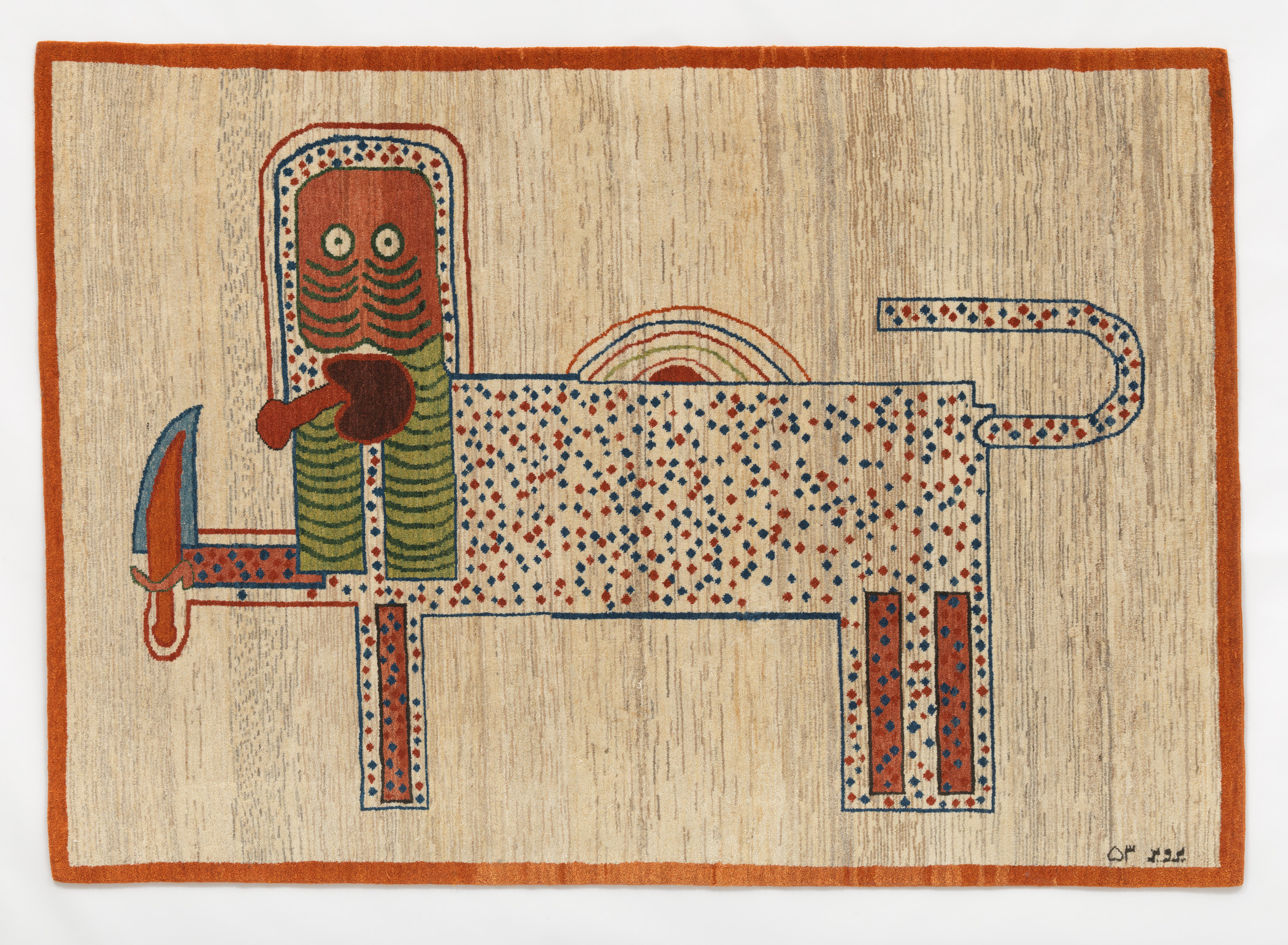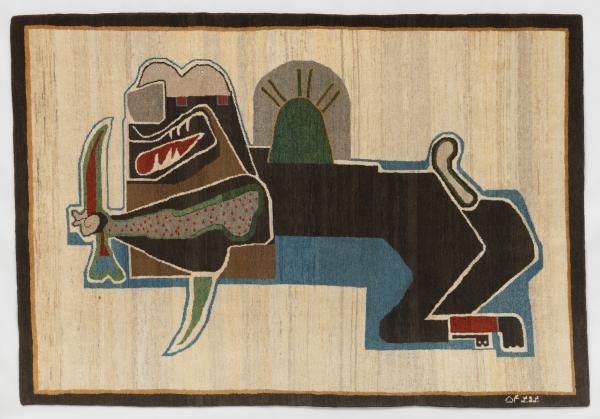For many Americans, perhaps their first encounter with the name Parviz Tanavoli came with media reports in February 2017 that the Museum of Modern Art intended to exhibit works from its permanent collection by artists representing countries like Iran, which were part of President Trump’s so-called Muslim Travel Ban. While MoMA was widely praised in the press for its response to this exclusionary act, little mention was made of museums, like LACMA, that show the works of such artists on a regular basis. Indeed, LACMA has the largest collection of contemporary Middle Eastern art of any American museum.
Tanavoli is one of the founders of Iran’s main modernist movement, beginning in the 1960s, and known as the Saqqakhana school (literally “house of the water-bearer,” after Shi‘ite-themed public drinking fountains), which was inspired by traditional art and architectural decoration, both religious and secular. Today, at the age of 81, he remains an active force in contemporary Iranian art and has achieved widespread recognition, especially through his sculptural renditions of the word Heech (Persian for “nothing”). In addition to MoMA, his works are in collections such as The Metropolitan Museum of Art, the Tate Modern, the British Museum, the Minneapolis Insitute of Art, and the Museum of Contemporary Art, Tehran; the last hosted an exhibition in summer 2017 titled Parviz Tanavoli and the Lions of Iran.

Tanavoli has a long-standing fascination with lions, which he has rendered in a variety of media and configurations. He began collecting tribal rugs decorated with lions in the late 1960s–early 1970s, and these inspired some of his own work. In these two “lion and sword” carpets Tanavoli highlights a long-established emblem of kingship and the Iranian state—a lion with sun rising from its back (Shir u Khurshid). The lion and sun with sword was the symbol of Pahlavi Iran (1925–79) and appeared most conspicuously on the national flag. Tanavoli’s use of it in his Pahlavi-era carpets, along with what appears to be an antique lock on the hind leg of one lion, suggests a subtle form of political commentary. The lock also reinforces the artist’s ties to the Saqqakhana movement and the inherent Shi‘ism of the imagery; in a similar vein, both lion and sword are associated with the first Shi‘ite Imam Ali. More recently Tanavoli has returned to the same designs in a series of prints, including a large silkscreen and a portfolio of four smaller prints of lions, where he redeploys the original images by focusing on color and form. The two carpets, which have been with the artist since their creation, will be featured in the upcoming LACMA exhibition In the Fields of Empty Days: The Intersection of Past and Present in Iranian Art from May 6 to September 9.
During our 32nd annual Collectors Committee Weekend (April 20–21), members of LACMA's Collectors Committee generously helped the museum acquire 10 works of art spanning a breadth of eras and cultures. Check back later today to learn about another acquisition.



